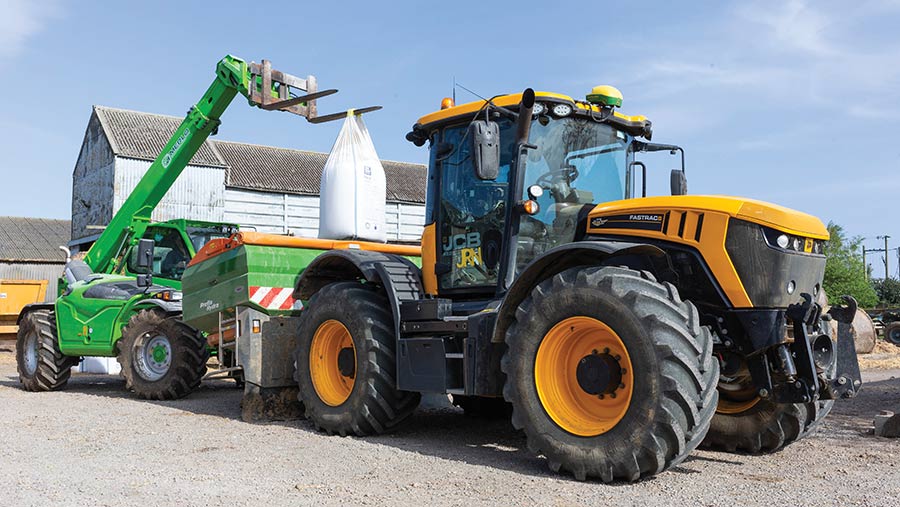Fertiliser appears reasonably priced with demand increasing
 © Tim Scrivener
© Tim Scrivener Reduced demand for fertiliser so far this season has kept prices in check and at their lowest levels for three years despite issues at manufacturers across Europe.
Demand for product on farm has recently started to pick up as crops progress, however large global supplies are weighing on the market.
Midweek, traders said the spot market in the UK for urea was at £345/t, and was expected to weaken further.
See also: Mole Valley Farmers sells off fertiliser site to Thomas Bell
Ammonium nitrate was quoted at £325/t on 8 May, diammonium phosphate (DAP) at £565/t, and triple super phosphate (TSP) at £430/t.
The UK continues to be heavily reliant on imported product which results in a small premium being applied.
Traders at ADM said that buyers of ammonium nitrate globally are locking in forward prices at current low levels, while in Europe, the market remains more cautious ahead of new season prices, which could potentially come in even lower.
Fertiliser manufacturer CF Industries market outlook indicated that the global nitrogen market had moved to a long supply position this spring due to lower-than-expected demand from India, Europe and North America.
Tony Will, president and chief executive officer at CF Industries said the business had faced a challenging first quarter as severe cold in January and some unplanned maintenance disrupted its network significantly. However, it has now restored operations to normal utilisation rates.
Mr Will said: “Longer term, we remain confident in our ability to drive strong cash generation due to a global energy cost structure favourable to our North American-based production network and continued progress on our low-carbon clean energy initiatives.”
The manufacturer suggested that more than a third of ammonia and a quarter of urea production in Europe was either operating at a reduced capacity or shutdown during March.
It also indicated that European production looks set to remain below historic levels increasing import requirements.
Svein Tore Holsether, of fertiliser manufacturer Yara said Russian urea imports to Europe reached an all-time high last season and currently account for almost one-third of total urea imports to the EU.
“While raw material sanctions and price pressure is taking a double toll on European industry, Russia is gaining market influence. That not only endangers European industry and the green transition, but it also makes European food production more vulnerable,” said Mr Holsether.
Inhibitors
Lucy Hassall, fertiliser manager at Openfield, said Defra has a target to reduce ammonia emissions by 16% by 2030 as part of the clean air strategy.
“We have now entered the period where any urea-containing fertiliser must always be applied with an appropriate inhibitor,” said Ms Hassall.
“However, there is the possibility of a derogation for the use of unprotected liquid urea outside of the restricted dates if Facts-qualified advisers can provide agronomic justifications if liquid fertiliser is incorporated by injection or within 48 hours of application by irrigation or cultivation.”
